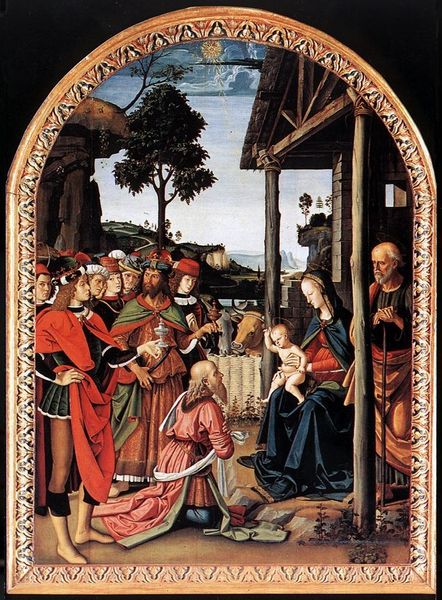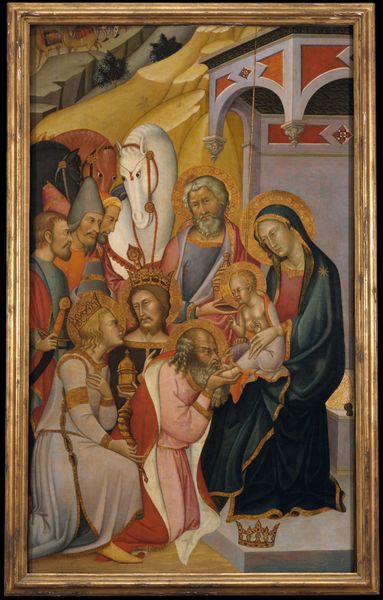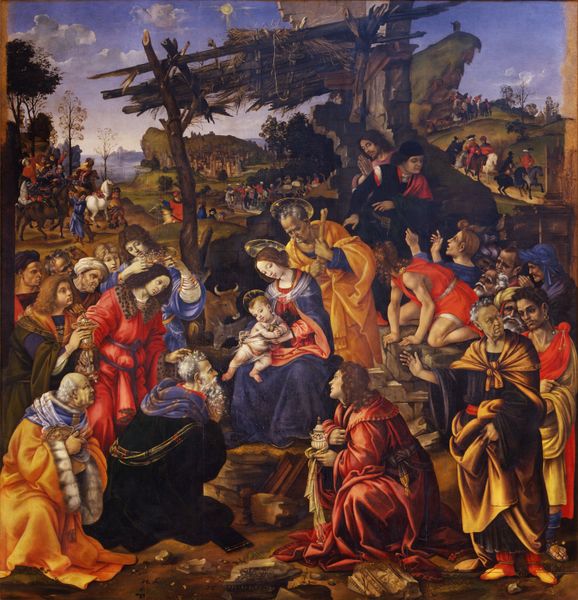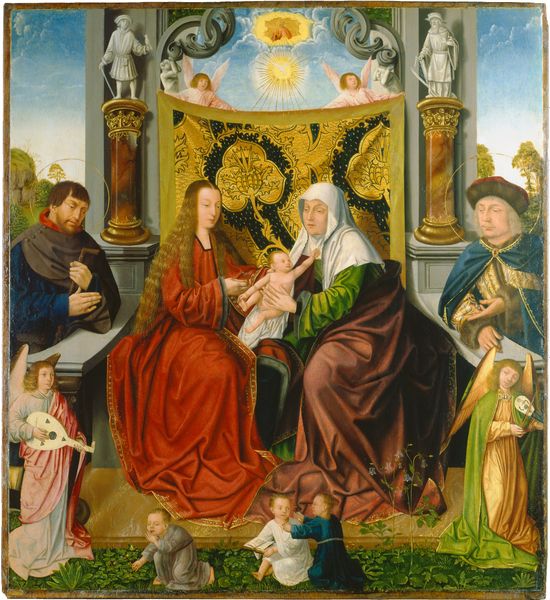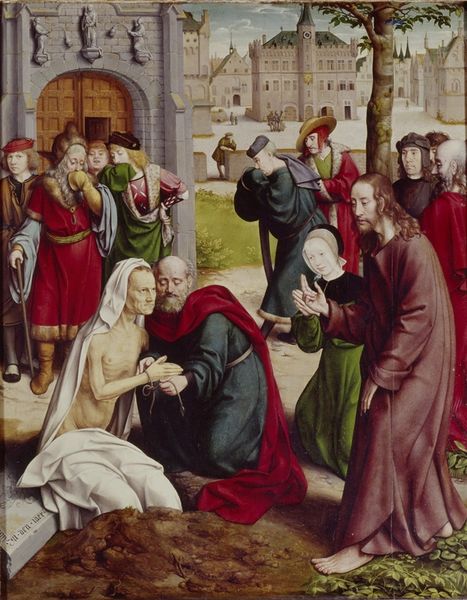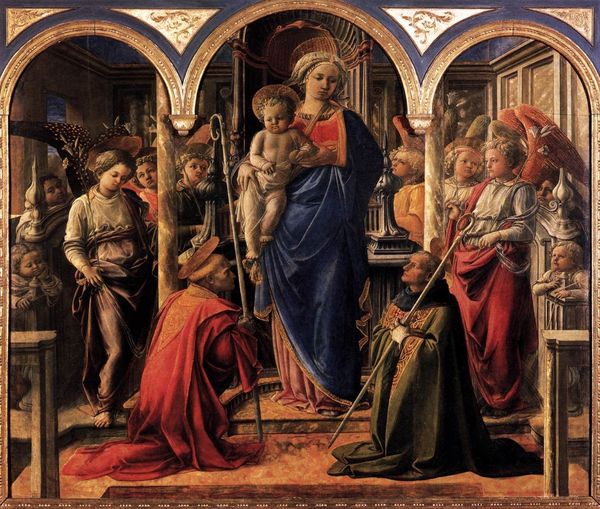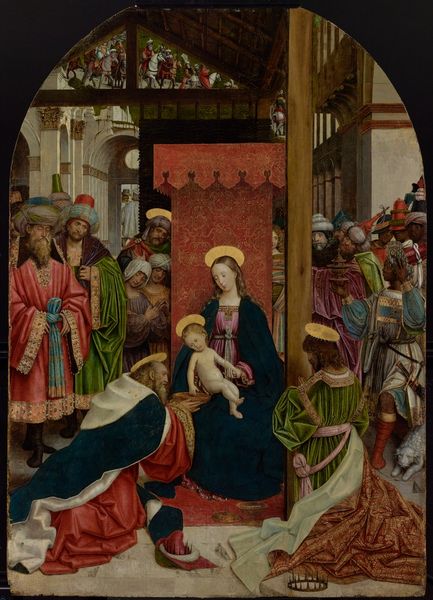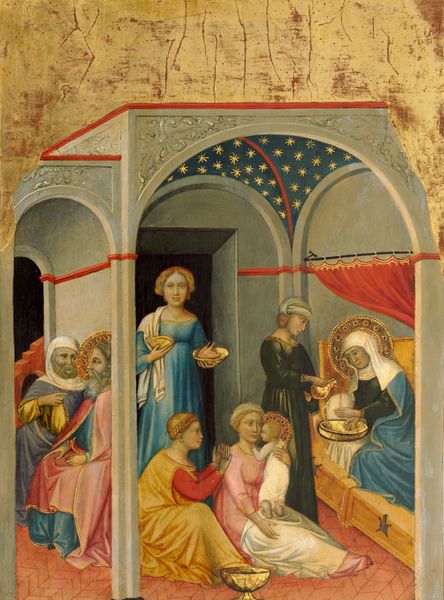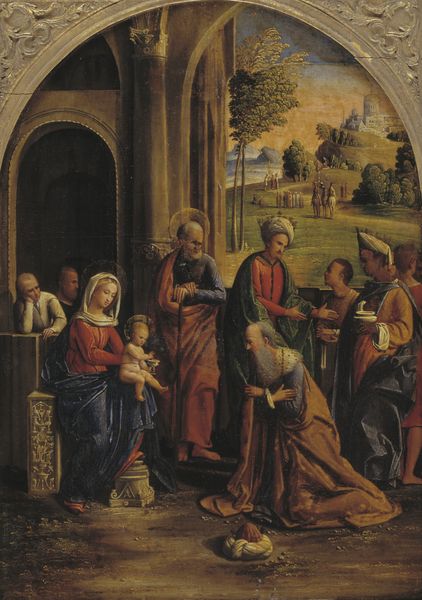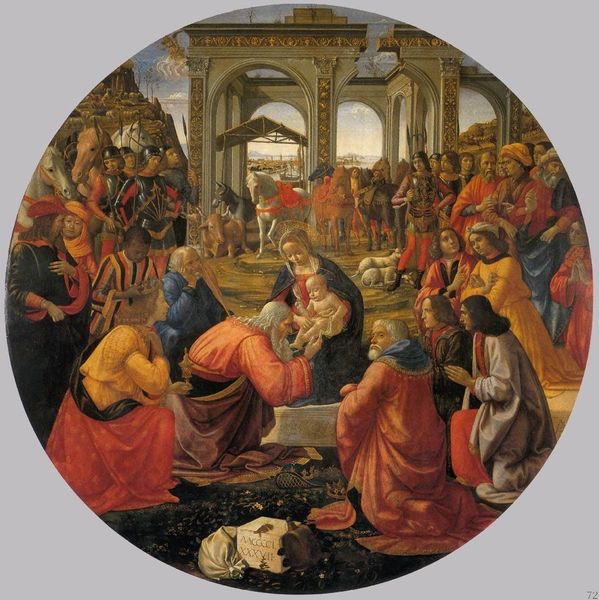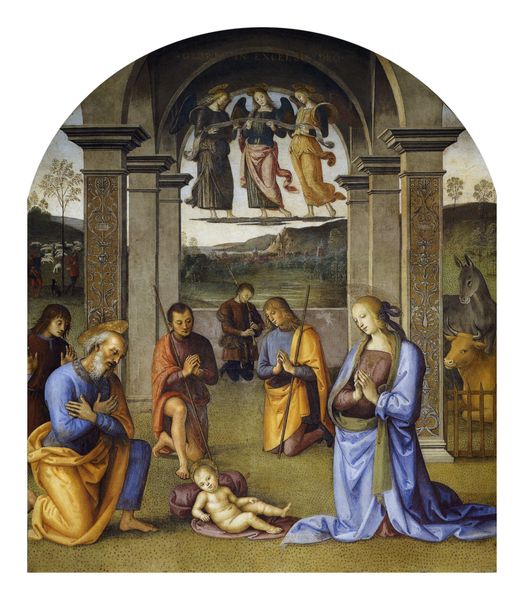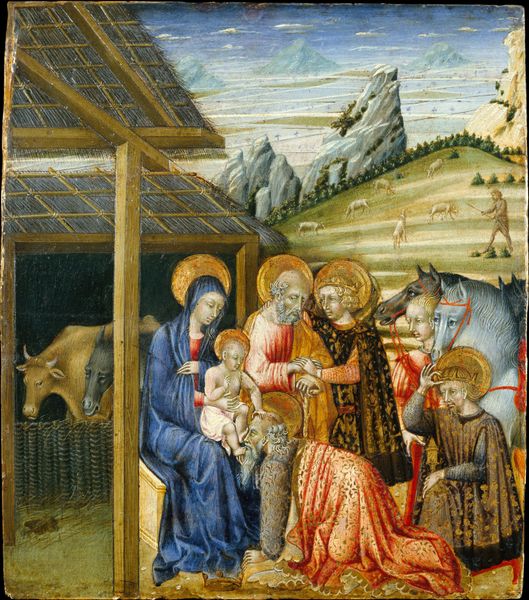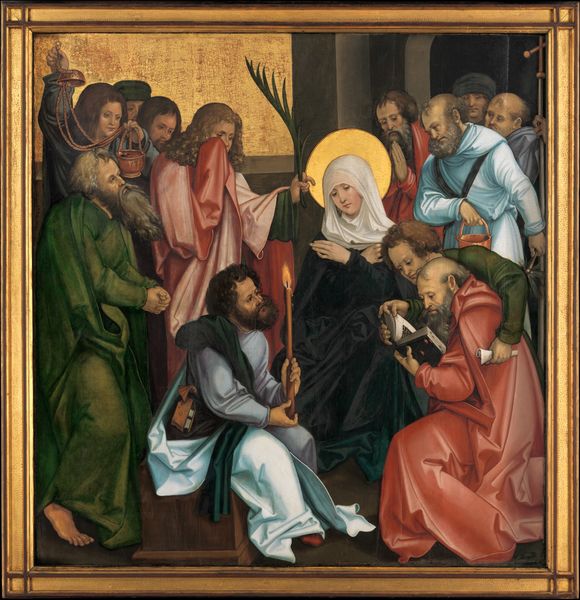
painting, oil-paint, oil
#
portrait
#
woman
#
allegory
#
animal
#
painting
#
oil-paint
#
oil
#
figuration
#
11_renaissance
#
handmade artwork painting
#
oil painting
#
child
#
13_16th-century
#
painting painterly
#
history-painting
#
italian-renaissance
Dimensions: 86.8 x 60.5 x 1.0 cm
Copyright: Public Domain
Editor: Here we have "The Adoration of the Magi," an oil painting dating from about 1517 to 1520. I am immediately drawn to how the architecture and landscape seem almost as important as the figures themselves. What symbolic weight do you see carried within this work, especially regarding the integration of these elements? Curator: The symbols are multilayered. Look at how the ruin-like structures and the distant city coexist. The architecture, a mix of Romanesque decay and Renaissance aspiration, might signify the transition from the Old Covenant to the New. This backdrop provides a historical context. Doesn’t it evoke a sense of both the past’s crumbling authority and the promise of a renewed era with the coming of Christ? What kind of emotional resonance do you get from that contrast? Editor: It does create a kind of tension between the decline and the potential for rebirth. The detail in the magi’s clothing, their gestures, it feels incredibly deliberate too. Curator: Precisely. The gifts offered aren’t just treasures; gold represents kingship, frankincense divinity, and myrrh mortality – alluding to Christ’s fate. Consider their different ages and ethnicities as well; they suggest the universality of Christ's message. Notice the deliberate engagement or disengagement between the characters, which highlights their awareness of a shift in temporal power. How might cultural memory have shaped such depiction, given the era’s perspective? Editor: So, the painting uses symbols not just as labels but to construct a larger narrative about power, faith, and the passage of time. I hadn't considered the geographical suggestions carried within it as deeply. Curator: Exactly! By delving into the language of symbols and the period’s visual vocabulary, a simple adoration scene becomes a powerful reflection on humanity's spiritual and temporal journey. It has been lovely uncovering these cultural threads together! Editor: I appreciate your guiding perspective; now I'm seeing more than just a biblical scene. It truly tells a larger story about historical and spiritual transformation!
Comments
No comments
Be the first to comment and join the conversation on the ultimate creative platform.
